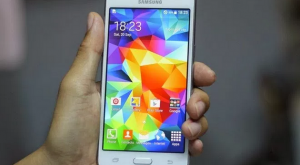Last Updated on September 20, 2024 by Mathew Diekhake
 Google’s version of the Android operating system has dominated the mobile landscape, partly due to Apple only choosing to run software on hardware that they own and partly due to the little green robots’ brilliance.
Google’s version of the Android operating system has dominated the mobile landscape, partly due to Apple only choosing to run software on hardware that they own and partly due to the little green robots’ brilliance.
Android can be found running on heaps of different manufacturers, not too dissimilar to how Microsoft’s Windows environment is seen running on devices made by plenty of manufacturers, too.
Apple not wanting to share their software really paved the way for someone like Google to come along and distribute some other software to the masses, but Android’s success boils down to a lot more than just opportunity. It’s the Linux kernel foundation that set the tone for what Android became: an operating system that was as secure as any other, while still offering owners an excellent user experience. It isn’t without its quirks—plenty of people still have no idea where their files end up after downloading them—but all in all, it, combined with Appel’s iOS, are the two clear leaders in the world of mobile operating systems.
If you’re just pretty keen on grabbing a phone off the shelf that offers you enough space to store your music and so forth, then you probably aren’t interested in taking too much time to learn what Android is all about. But for the tech enthusiasts among you, you might be interested in finding out what Android can really do.
The research you dive into should always in some way lead you to Android being based on the Android Open Source Project, which in itself, offers developers the chance to change the software. Whenever a developer creates software with AOSP, and they aren’t affiliated with Google in any way, their creations are known as custom software. You might also be aware of them as custom ROMs.
There can be many custom ROMs available to install, but before you can do any flashing, you first need to exchange the stock recovery environment with a custom one, known as the custom recovery image. Today there is only one custom recovery worth installing—TWRP Recovery—and it offers the chance to flash unsigned zip files, plus take partitioned backups, as well as the opportunity to restore them later, too. It gives you everything you could ever ask for between ROM flashes, and nothing is stopping you from using the custom recovery image for getting root access, too, if your custom ROM doesn’t already provide it.
Details of Note
- The custom recovery images available in this guide are only to be installed on the Samsung Galaxy Core Prime (Qualcomm) smartphone. Most devices have a custom recovery image developed specifically for it, and you shouldn’t install one that is intended for another device unless advised it is okay by a professional.
- The codename for the Samsung Galaxy Core Prime with the Qualcomm processor TWRP recovery image is “coreprimelte.” You will see that codename in the TWRP image file path and also from your About Device menu so you know you are flashing the right file on the right device.
Files Required
- Download on your computer the latest version of TWRP Recovery: Primary (Americas) | Primary (Europe).
How to Install TWRP Recovery on Samsung Galaxy Core Prime (Qualcomm)
Note: The Odin flashing tool is really easy to use, but it only works on the Windows operating system. You won’t get the flashing tool to load on a Mac or Linux computer. It doesn’t really matter what version of the Windows operating system that you’re using as long as it is something above Windows XP.
1. Download and install the Samsung USB drivers on the computer if you don’t have them already.
2. Download the firmware (.tar) file from the links above directly to the computer. Extract the file by right-clicking on it and choosing the option to extract. When you do, you’ll see the tar.md5 file inside. That’s the file you’ll be using to do the flashing.
3. Download the Odin flashing tool. It doesn’t really matter what version, but the latest is the most up to date so grab that one. Extract the Odin file and then double-click on the Odin executable file (.exe) that is found from within the Odin folder after extraction. You should now have the Odin interface open on the computer and waiting for you to connect to it.
4. Boot the Samsung mobile device into the Download Mode by first powering it down and then rebooting by holding the Volume Down + Home + Power keys at the same time.
5. A yellow warning triangle will come up on the device’s display. At this time you need to press the Volume Up button. You’ll then see the device getting into the Download Mode. It’s then ready for the flashing.
6. When in Download Mode, connect the Samsung mobile device to the computer with the USB cable.
7. If you have installed the USB drivers correctly, the Odin flashing tool should detect your device. You can tell this by observing the ID: COM port lighting up with a color, usually yellow or blue.
It doesn’t matter what color, it’s the lighting up that counts.
8. After the device is picked up by Odin, click on the PDA or AP button, depending on what button your version of the Odin flashing tool has.
9. Navigate to the stock ROM folder and upload the tar.md5 file to this location in Odin.
10. Without changing any of the default settings, click on the Start button in Odin, and the flashing then begins.
11. Wait until Odin shows a Pass message before disconnecting your device.
You can now close the Odin flashing tool and continue using your computer if you like.
That’s all.
